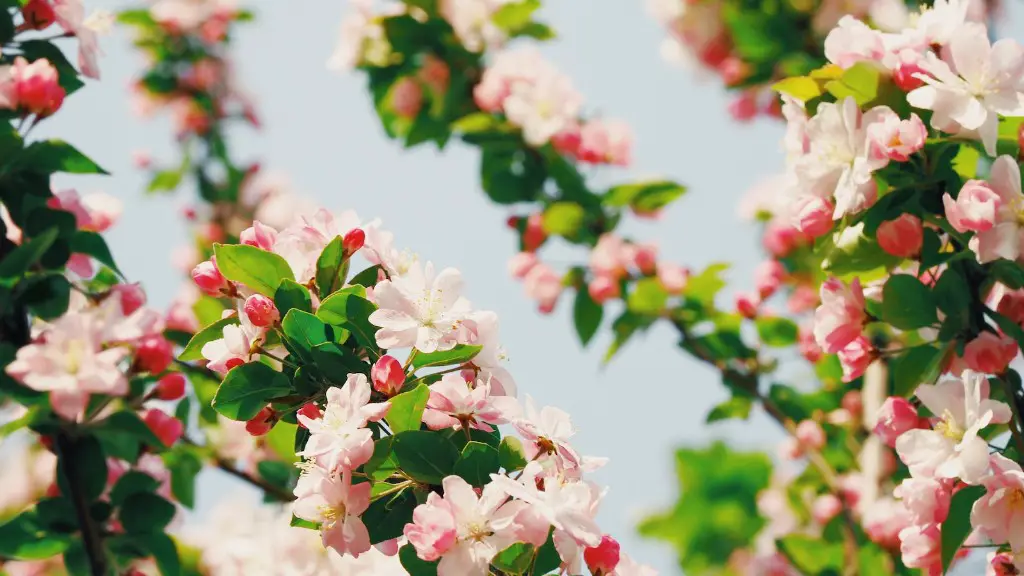Often, when the leaves of a lemon tree start curling, it can be an alarming and intimidating sight for a home gardener. The desire to immediately take action may come upon one and rightly so. The curling of lemon tree leaves can be caused by any number of potential issues, it is important to determine what could be causing it in order to start taking corrective action. To examine why a lemon tree’s leaves are curling, let’s take a look at the potential causes so that a resolution can be achieved.
The most common cause of leaf curling on a lemon tree is caused by a pest infestation. Withdrawing moisture and nutrients from the leaves, leaving behind damaged foliage, aphids, mites, and scale are the most common offenders. Early identification and control of such pests is the most effective way to reverse the symptom. In order to determine if a pest infestation is responsible for the curling, a close inspection of the area and leaves is necessary.
Another possible cause for lemon tree leaf curling is a deficiency in the plant’s diet. An imbalance or deficiency of necessary nutrients can quickly lead to weakened foliage, as the plants are unable to adequately take in the needed minerals. A soil test can be used to help identify and diagnose any nutrient deficiencies in the soil. Once the deficiencies have been established and a plan is put into place to rectify them, the symptoms will begin to diminish as the plant starts to regain its vigor.
The lack of proper watering can also lead to curling leaves on a lemon tree. This can either be due to the gardener’s negligence or caused by the incorrect amount of irrigation for the tree’s needs. If the gardener is providing the proper amount of water but the tree is still exhibiting signs of dehydration, the problem may be in the poor absorption of the water from the soil caused by incorrect soil compositions or an unsuitable pH balance.
On the other hand, excess irrigation can also cause leaf curling. Too much water can overload the plant’s abilities to absorb what it needs and a sudden saturation can lead to the leaf cells bursting. Soggy soil will also prevent the absorption of proper air to the root system, leading to weakened and discolored leaves.
Finally, extreme temperatures or sudden changes in the climate can also be responsible for the leaves curling. When too hot or too cold, a lemon tree can be pushed beyond its comfort levels, leading to discolored and dry foliage. Establishing a suitable location suitable for the citrus tree’s needs is beneficial in avoiding such a situation.
Pest Infestation
Pest infestations, particularly insects such as aphids, mites, and scale, are the most common causes of leaf curling on lemon trees. Pests can quickly wreak havoc on the foliage of a plant, stealing essential water and nutrients and leaving behind weakened and damaged leaves. To determine the presence of pests, a thorough inspection of the leaves and area is necessary.
To treat pest infestations, it is important to target the issue directly. Natural insecticides and other methods of pest control can be used without resulting in drastic changes to the environment or the health of the tree. In some cases, physical removal of the pests or treating the infected area with horticultural oil is possible.
It is also important to bear in mind the importance of prevention when it comes to avoiding pest infestations. To reduce the risk of infestation, the tree should be looked after and the soil kept clean from debris and weeds. Pruning the damaged and weakened branches of the tree is also a great way to reduce the chances of a pest attack.
In some cases, the installation of physical pest barriers around the tree, such as bird netting and ant barriers, can help to protect the tree from pests. As with all methods of pest control and prevention, it is important to ensure that the method is suitable, environment-friendly, and safe to use around citrus trees.
In addition, the tree should be routinely monitored to ensure the effectiveness of the pest control method and that the infestation has been eliminated. The proper treatment and preventive measures can help to keep any pests at bay and preserve the health of the tree.
Nutrient Deficiency
Nutrient deficiencies can quickly lead to weakened foliage and the curling of lemon tree leaves. As a result, it is important to identify any potential issues so that they can be rectified as soon as possible. To do so, the most effective option is a soil test, which can help to determine the mineral makeup of the soil and detect any deficiencies in the necessary nutrients for the tree.
Once the deficiencies have been identified, a plan to rectify them should be put in place. The use of organic, slow-release fertilizers can help to restore the proper balance and improve the health of the tree. It is important to take into consideration the age and size of the tree when determining the proportion and strength of the doses.
In more serious cases, foliar feeding, or the direct application of nutrients to the foliage, may be necessary. Such treatments, however, should only be used as a last resort and are not suitable for all varieties of citrus trees. Before embarking on such treatments, it is important to consult a certified arborist or citrus specialist.
It is worth noting that although correcting a nutrient deficiency is essential for getting the tree back in good health, too much of the same can prove to be detrimental. Over-fertilizing can lead to even more severely damaged foliage and, in worse cases, death of the entire tree. The practice of learning from experiences and observing the tree closely is beneficial in helping to achieve the proper balance.
Watering
Maintaining the proper balance of water for a lemon tree is essential in avoiding leaf curling. Over-watering can lead to weakened foliage and poor growth, while poor irrigation can cause dehydration and a range of issues, such as leaf curling. It is important to understand the water needs of the tree and be prepared to provide the proper amount.
To determine if the tree is able to absorb the water provided adequately, it is worth performing a soil test. This can help to identify any soil composition issues or unsuitable pH levels that can be causing an issue with absorption. If such issues are present, it is important to rectify them in order to avoid further damage to the tree.
It is also important to note that the incorrect timing of irrigation can be as damaging as watering too little or too much. Providing excessive amounts during the hottest or coldest times can shock the tree and lead to discolored and weak foliage. For this reason, it is essential to observe the tree closely and to provide irrigation at the most suitable times for avoiding damage.
Finally, in the case of a drought, emergency irrigation may be necessary. This can be done manually or with the assistance of a regulated irrigation system. In either case, a soil test should be performed in the days following irrigation in order to ensure that the water was effectively absorbed. If the water is found to have been inadequate, then extra irrigations may be necessary.
Climate
The climate the lemon tree is placed in is an essential factor to consider when looking at leaf curling. Extreme temperatures or sudden changes in the climate can prove hostile for the tree, leading to weakened and discolored foliage. With this in mind, it is important to provide a location that is suitable for the citrus tree’s needs.
When selecting a suitable spot, it is important to take into account the amount of sunlight and wind available. For the most part, lemon trees require at least six hours of direct sunlight a day and protection from strong winds. In areas with harsher climates, installing a sunshade or windbreak can be beneficial in protecting the tree from the elements.
It is also beneficial to consider the climate of the area during the planting process. Planting during the winter months, when temperatures are likely to be more mild and consistent, is beneficial as it allows the tree to establish properly and take root before the onset of hot summer weather.
Finally, during extreme weather conditions it is important to ensure that the lemon tree is able to access the proper amount of water and that any protection measures installed remain effective. A monitoring plan should be put in place to ensure that the tree remains healthy and so that any problems that arise are identified and addressed quickly.



